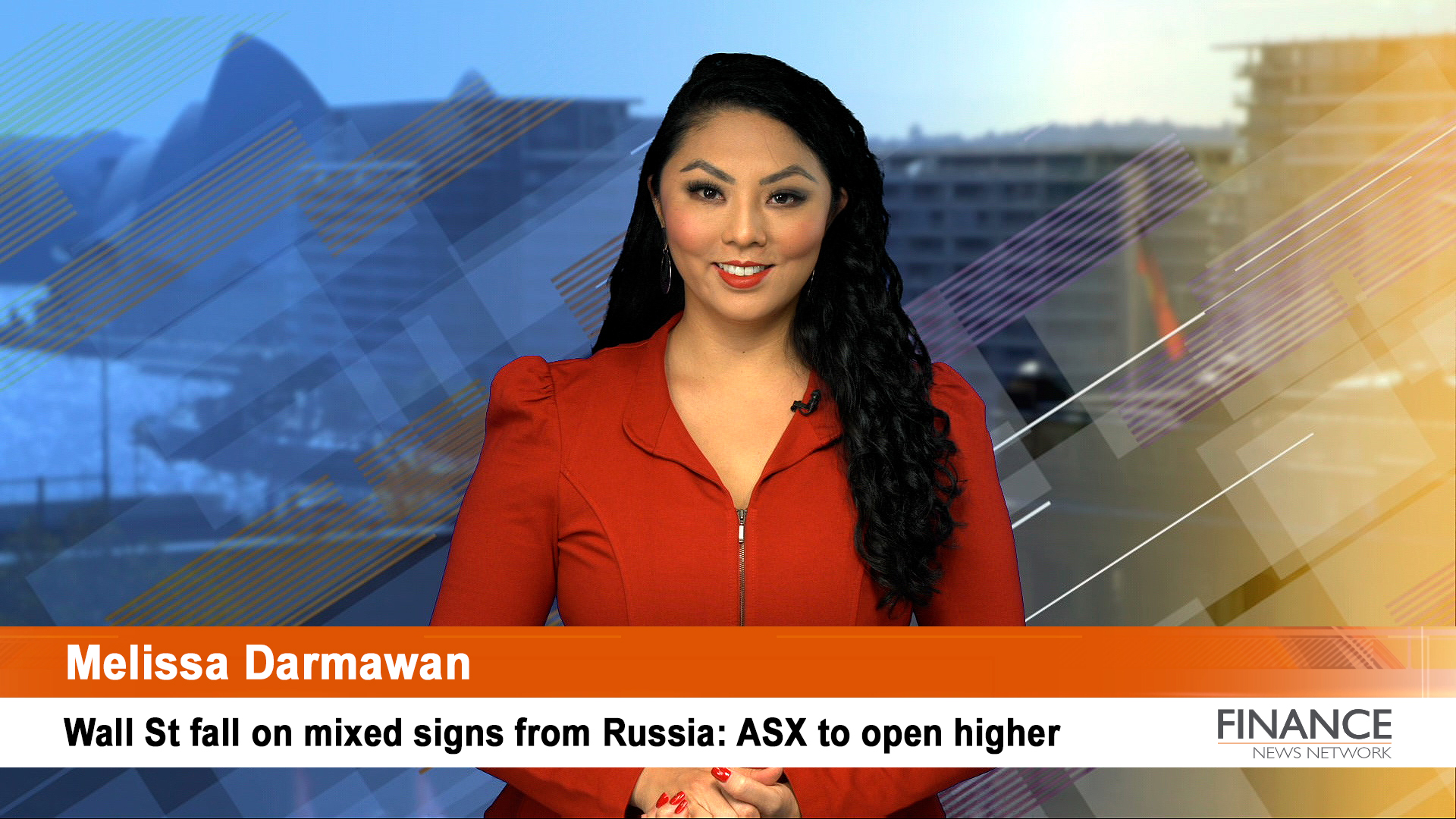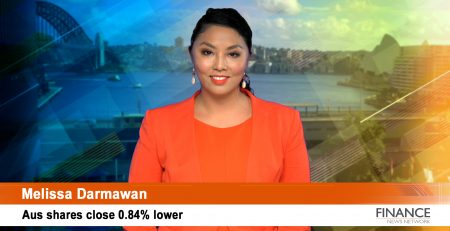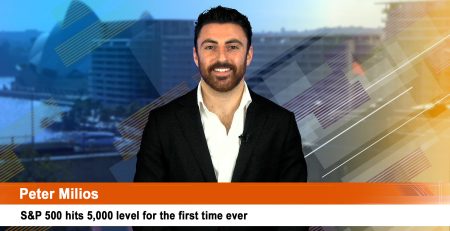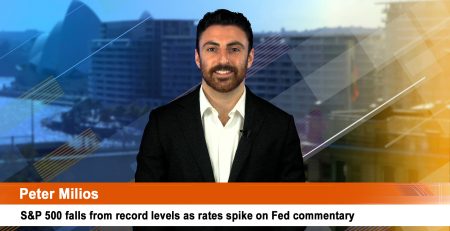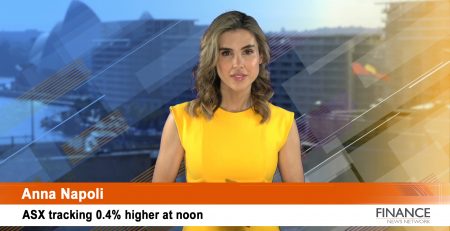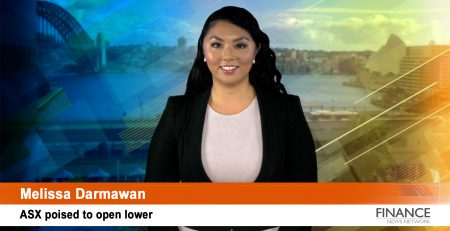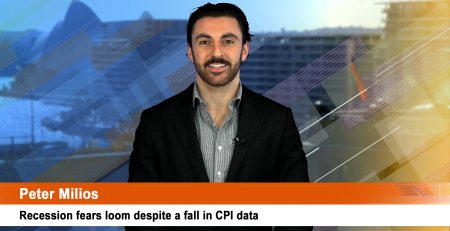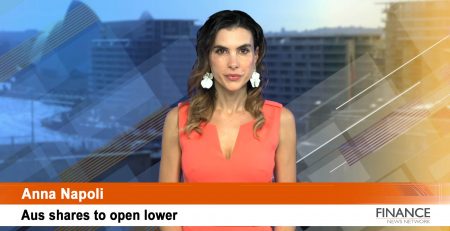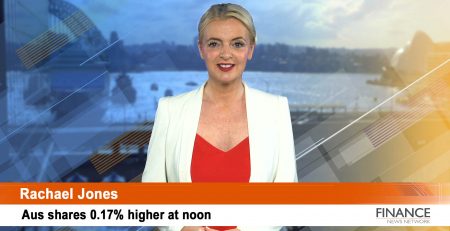Wall St fall on mixed signs from Russia: ASX to open higher
Asian markets and Aussie shares closed mixed after investors digested hot US inflation figures and the hawkish tilt from the European Central Bank. European markets rallied on optimism from the Kremlin on a "certain positive shift" in talks with Ukraine. Wall St fell as investors questioned President Putin's words over his actions amid hot inflation, weighing down on consumer sentiment.
Register – Investor event
Our next FNN investor event is on Tuesday 22 March, at 12.30 AEST with Shaw & Partner’s market strategist Martin Crabb, and four CEOs presenting. Make your way to fnn.com.au to register for your free online spot.
Good morning. I’m Melissa Darmawan for Finance News. This is your market outlook.
The Australian sharemarket is set edge higher after another volatile week.
Wall St closes lower, bonds, oil, gold falls
US stocks closed at session lows as the war in Ukraine kept investors on edge. In hopes of progress, stocks rallied after Russian President Putin said he saw “certain positive shifts” in Ukraine talks. Despite willing to compromise on neutrality, stocks fell as investors reflected on Russia's intensifying actions, over its reported words in the past few weeks.
US bans Russian imports, Russia stops on Iran deal
Adding to the growing economic sanctions, President Biden revoked Russia's preferred trade partner status with the import ban including alcohol, seafood, and diamonds. Along with the announcement, Washington also urged allies to suspend normal trade with Moscow.
Elsewhere, Russian diplomats also put the brakes on other unrelated diplomatic efforts. Russia threw a curveball on reinstating the nuclear deal with Iran, and demanded relief from sanctions related directly to the crisis in Ukraine.
The hopeful increase in supply appeared to have Moscow worried after a restored nuclear deal. The move would likely create competition for Russian oil and ease energy prices, leading to a ripple effect on further financial sanctions.
Commodity complex
Oil prices were whipsawed, particularly as oil is sensitive to the war headlines, with demand destruction set to worsen as inflationary pressures mount, the longer this incursion continues. Also, remember, there's a lag when it comes to oil prices being pushed to the consumer. Despite the energy shock being tied to these tensions, it’s really been brewing before all this happened.
With consumers likely to pull back their demand in the coming months, inflation is at all time multi-year highs, so it's likely that consumers are going to be price sensitive, compared to when they were flushed with cash from stimulus payments.
Nevertheless, the supply side of the equation for oil will keep this market tight for the near time. Until energy traders see more supply, any reprieve around pricing pressures looks low, that means the cost at the pump is likely to rise.
Gold is below the US$2,000 level even before President Putin’s words, with the price of the yellow precious metal on the decline from the last time we spoke. It closed $15 lower. Now for gold to hit the two handle, one thing to remember is that inflationary pressures is set to rise and is likely retard economic growth the longer this war continues – these factors form the bull case.
Global companies cut ties with Russia
With global corporations cutting ties from conducting business with Russia, there is a readjustment to the global balance sheet. Essentially, decoupling Russia, out of the global economy as we’ve touched on last week.
Major players are flagging the likely impact to the top line while market participants are looking to reallocate capital – if it's not an illiquid asset, as the hunt continues for countries set to be the beneficiaries of this commodity situation.
Fed & ECB were on the docket last week
Despite all the events that have happened, if you did forget about the fresh US CPI figures, the ECB’s latest news, and locally, that we have wrapped up reporting season, you’re not alone.
ASX performance before Feb 24
Compared to global markets, the ASX has added 3.8 per cent since the end of January with resources bolstering the index, thanks to rising commodity prices. The energy sector is by far is the outperformer by almost 16 per cent by end of January, followed by materials, up over 7 per cent and consumer staples. Information tech was the worst along with consumer discretionary – due to imminent higher fuel prices on transport.
Meanwhile, Investors have also piled into the defensive nature of the consumer staples sector, while the prospect of higher interest rates is expected to ease margin pressure for the banks, lifting financials by 4.8 per cent.
Of course, these figures were before the war started two weeks ago on 24 February.
Figures around the globe
At the closing bell, the Dow Jones lost 0.7 per cent to 32,944, the S&P 500 fell 1.3 per cent to 4,204 while the Nasdaq closed 2.2 per cent lower at 12,844.
The Dow fell for its fifth straight week, while the S&P 500 and the Nasdaq notched its fourth weekly loss in the past five weeks for both indexes.
Across the S&P 500 sectors, the nervousness in the market was quite pronounced with this broad-based sell-off. Every sector was up for sale. Consumer discretionary, and information tech, both down 1.8 per cent as the worst performers, utilities shed the least, by 0.4 per cent.
The yield on the 10-year treasury note was steady at 1.99 per cent, gold tumbled on a weaker greenback.
Across the Atlantic, European markets closed higher on Putin's comments. Paris added 0.9 per cent, Frankfurt closed 1.4 per cent higher and London’s FTSE gained 0.8 per cent after Britain’s GDP grew by 0.8 per cent in January, following a fall of 0.2 per cent in December.
On the London Stock Exchange, Rio gained 1.2 per cent, BP fell 0.9 per cent and Shell added 0.4 per cent.
Asian markets closed mixed. Tokyo’s Nikkei lost 2.1 per cent, Hong Kong’s Hang Seng fell 1.6 per cent while China’s Shanghai Composite added 0.4 per cent.
On Friday, the Australian sharemarket closed 0.9 per cent lower at 7,064. Over the week, it lost 0.7 per cent and for the year, the index is down 5.1 per cent but an outperformer when compared to Wall St.
SPI futures
Taking all of this into the equation, the SPI futures are pointing to a 0.3 per cent gain.
What to look out for this week
Look out for our labour force figures, the jobs report from the Australian Bureau of Statistics on Thursday, the RBA board minutes on Tuesday, the Federal Reserve interest rate outcome on Wednesday, China’s data docket on the world’s second largest economy which is expected to slow in the latest figures.
Ex-dividend
Austin Engineering (ASX:ANG) is paying 0.2 cents fully franked
Ariadne Australia (ASX:ARA) is paying 0.25 cents fully franked
Best & Less (ASX:BST) is paying 11 cents fully franked
Chorus (ASX:CNU) is paying 13.0366 cents unfranked
F.F.I. Holdings (ASX:FFI) is paying 10 cents fully franked
L1 Long Short Fund (ASX:LSF) is paying 4 cents fully franked
Peppermoney (ASX:PPM) is paying 9 cents fully franked
Saunders International (ASX:SND) is paying 1 cents fully franked
Tassal Group (ASX:TGR) is paying 8 cents unfranked
Dividend-pay
There are three companies set to pay eligible shareholders today
Bapcor (ASX:BAP)
Eumundi Group (ASX:EBG)
Fiducian Group (ASX:FID)
Commodities
Iron ore has lost 1.2 per cent to US$154.50. Its futures point to a 1 per cent fall.
Gold has lost $15.40 or 0.8 per cent to US$1,985 an ounce. Silver is down $0.10 or 0.4 per cent to US$26.16 an ounce.
Oil has gained $3.31 or 3.1 per cent to US$109.33 a barrel.
Currencies
One Australian Dollar at 8:25 AM has weakened from Friday, buying 72.92 US cents (Fri: 73.59 US cents), 55.94 Pence Sterling, 85.62 Yen and 66.80 Euro cents.
Copyright 2022 – Finance News Network
Source: Finance News Network

